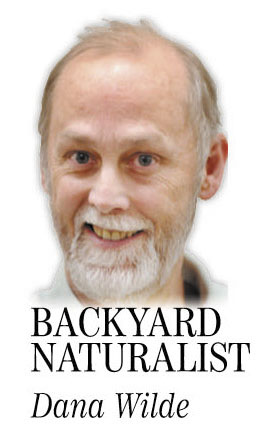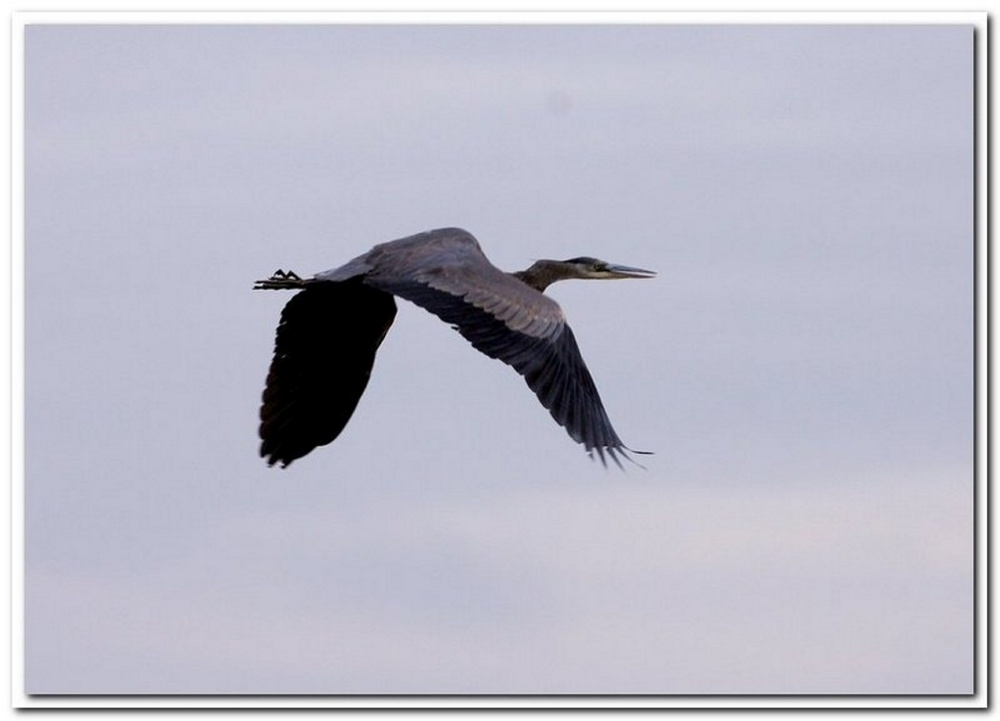The little brook that runs west under my driveway off Bangor Road feeds into a low, wet area that extends at one level of muck or another to an even muckier, wetter area that for lack of a better name is known, on the DeLorme map, as Bog Brook. The Bog Brook bog straddles the road and converges somehow with another wet area that’s fed by Shaw Brook (so the map calls it), which is an element of Carlton Bog, whose ground zero is Carlton Pond, most of which is in Troy and a piece of which is in Detroit. (Pronounced DEE-troit in these parts.)
Carlton Pond is one of those obscure backwoods nooks that fascinate ecologists. It’s home base to a lot of interesting wetland life, including some birds that are having survival difficulties. Among these are bald eagles (on the state’s list of species of special concern), black terns (on the state’s endangered species list) and great blue herons — a species of special concern because something not well understood has been happening to their populations in the past 30 years or so.
The maps and lists I’ve found do not specify that great blue herons nest in the vicinity of the Bog Brook bog, and I’ve never actually laid eyes on any of their big, woody nests high up in old trees, but I’m pretty sure they do. From time to time I see them gliding across the road, moving between one Carlton Bog interconnection and the next. Once one rose over my brook, like a silent wraith, among the hemlocks and maples. And I’ve seen them cruise low and noiseless over the beaver pond up the road toward Bangor.
They are intensely beautiful in flight. Their long-stroking wings and carefully jointed legs folded underneath are grace incarnate, and the final blow of reality is their complete silence. It spreads out in your mind like wings and cracks open a doorway, where particles of light from a next state of consciousness float through. “The blue heron glides like God did / across the face of the waters / when all was void,” begins a poem, and your mind goes with it.
Back down here in reality –— that’s what we call it, anyway — the herons’ coastal breeding population has been declining since the 1970s, and fell by 73 percent between 1983 and 2013, according to the Department of Inland Fisheries and Wildlife’s 2015 Wildlife Action Plan.
What’s been happening to them is not clear. The biologists think human disruptions of nesting habitat — such as logging and outdoor recreation activities — play some role, and a possibly larger factor is a surge in nest predation by other animals like raccoons and bald eagles.
On the Maine Heron website kept by DIF&W wildlife biologist Danielle D’Auria is a link to a sound clip recorded in Newcastle in June 2014 of some kind of a raid on heron nests, probably by raccoons. The herons cry and wail as their homes apparently are ravaged and chicks torn away. The sense of anguish is as intense as their silent grace in flight. The sounds alone create a nigh-on heartbreak, if your moral or emotional territories connect anywhere with the birds’.
In our world a jolt like this is interpreted as a call to action. I think D’Auria meant to cast light in that direction when she posted the clip. The herons’ decline is another notch in the disaster Rachel Carson warned of 53 years ago in “Silent Spring” — the damage that spreads practically algorithmically out from one troubled species into the whole configuration of energies that make up the biological sphere where we all live. Efforts to save the herons from endangerment, and maybe even extinction, are the good fight. That’s one reality.
Underneath it is another reality: the possibility that the great blue heron’s intense beauty could be lost to our eyes and ears forever. This is the momentous alarm, to me. Not because I’m an aesthete and would feel sad and affronted to never see a heron again. But because the underpinning of our experience here on Earth is our experience of its beauty. That is the fundamental reason we live in, or go to, or watch the woods. Deer hunters with this flicker of moral understanding — and more — go to the woods primarily to get closer to the beauty there.
Our concern for the herons, eagles and black terns of Carlton Bog arises from an original, if often beshadowed sense that their beauty is the core of their value. That is our elemental connection to the herons, in the way the little brook in Troy connects to the brooks, mucks, ponds and unseen nests of Carlton Bog and the pond’s summer sheen.
Can we discourage raccoons and eagles from raiding heron nests, anyway? What invisible interconnected pressures are pushing them into the treetops to make their livings? Are we to blame — for losing sight of that underlying value and despoiling the woods, which seem like merely shadows and dark places to us?
There’s no clear way to articulate any of this, but I can’t stop pointing to the beauty. We’re all dust blown up into shapes. A tremendous network of interacting energy-particles. Amazing, when a crack opens, and you spot it, huge. A great blue heron gliding over the Bangor Road like a photon on a journey east.
Dana Wilde lives in Troy. You can contact him at naturalist1@dwildepress.net. Backyard Naturalist appears the second and fourth Thursdays each month.
Send questions/comments to the editors.




Comments are no longer available on this story